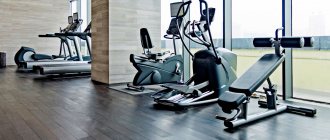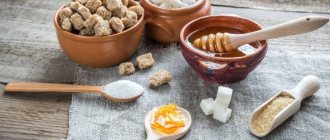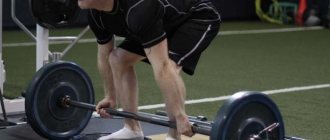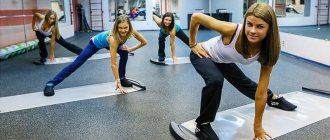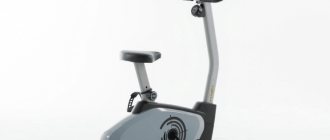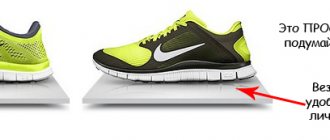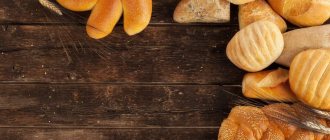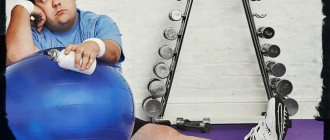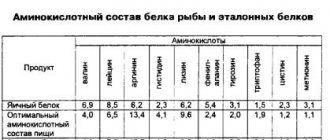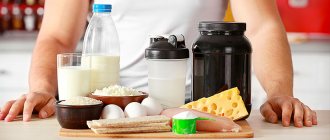Content
- 1 The most important products for a bodybuilder and bodybuilder
- 2 Sources of protein 2.1 Meat, offal
- 2.2 Eggs
- 2.3 Dairy products
- 2.4 Fish and seafood
- 2.5 Forgot something?
- 3.1 Beans
The most important products for a bodybuilder and bodybuilder[edit | edit code]
Nutrition
- the basis for success in bodybuilding. If you don’t eat enough protein and carbohydrates, you will never acquire impressive muscles; if you sharply limit yourself in fat, you will disrupt the hormonal levels in the body, which will also not have the best effect on the muscles. True, if you eat a lot, but the wrong foods, you risk acquiring impressive fat reserves instead of muscle, so you need a balanced approach in everything. We will talk about which products are the most important for bodybuilders, as well as fans of fitness and even body fitness, in our article.
Protein sources[edit | edit code]
Meat, offal[edit | edit code]
Meat as a source of protein
Meat can be considered the “No. 1” source of protein. But not everything is suitable for those who want to build a perfect body. Chicken, turkey, rabbit, and veal - this is the meat you should choose. But even here, not everything is useful. So, in both chicken and turkey, the most useful part is the breasts - they contain 22-25 grams of protein (per 100 g of product) with a minimum of fat. THE LEAST USEFUL PART IS THE WINGS, THEY ARE BEST TO AVOID. An interesting product is rabbit meat - one hundred grams of it contain 22-23 g of protein and no more than 10 g of fat. Rabbit meat is very tasty and healthy, but preparing it is not as easy as we would like. You should choose low-fat veal; it is better to avoid meat from older animals - beef - altogether. The same goes for pork and lamb, although both pork and lamb can be found quite lean - if you look hard enough. True, “fairly lean” means at least 15 grams of fat, which is absolutely useless to us. Separately, it is worth mentioning offal: liver, kidneys, heart, stomachs (mainly chicken). In terms of the content and quality of proteins, by-products are not very different from meat - one hundred grams of them contain about 15-20 grams of protein. True, there is not so little fat - about 12 percent. LIVER CAN BE CONSIDERED THE MOST HEALTHY BY-PRODUCT: HERE THERE ARE THE MOST PROTEINS, AND NOT SO MUCH FAT, AND THERE ARE ENOUGH VITAMINS. Especially vitamin A and B vitamins.
Cooking meat
Meat products should be cooked so that the fat they contain is rendered to the maximum. So, chicken thighs initially contain a fairly large amount of fat. But if you peel them, separate them from the bone and bake them on the grill, almost all the fat will disappear. With reservations, you can even eat pork and lamb cooked on the grill or in the form of shish kebab - most of the harmful fat from this meat will be removed during the cooking process. There is no grill, but it takes a long time to get to the barbecue? Cook in a Teflon frying pan (preferably with a grooved bottom), only without oil - the meat should use its own fat for frying. Which must be thrown away after cooking.
Eggs[edit | edit code]
Dairy products and eggs as sources of protein
There are many myths associated with this product. But before we talk about these myths, I will say that in addition to traditional chicken eggs, you can find quail, duck, goose, and even ostrich eggs on sale. The latter are simply huge (the weight can reach one and a half kilograms) - they clearly cannot be handled by one person, and it is very difficult to break such an egg: you first need to make several holes in it with a drill. But there is very little fat in ostrich eggs, and the cholesterol content is low. Quail eggs are very useful - they have antibacterial and immunomodulatory properties, they contain a lot of vitamin A, phosphorus, iron, and potassium. And vitamin D is contained in an easy to absorb form. Quail eggs also stimulate potency. True, you won’t get much protein from them - they are very small.
Duck and goose eggs are more exotic; the latter are even less common in our country than ostrich eggs. Both of them have such an exotic taste. In addition, duck eggs contain a high amount of fat, which is not entirely good. Well, now a few words about the myths associated with eggs. They say that eggs with brown shells are tastier and healthier. In fact, they are absolutely the same: it’s just that brown eggs are laid by chickens of Asian breeds, and white eggs by European breeds. Another myth is associated with the possibility of increasing cholesterol levels in the body when consuming eggs. But 1-2 whole eggs a day will not affect cholesterol levels in any way, and will bring a lot of benefits. The fact is that the yolks (namely, they contain all the fat) are sources of valuable amino acids that are not found in egg whites. SO YOU CAN CALMLY EAT TWO EGGS WITH YOLKS EVERY DAY, AND GET THE REST WITH EXCLUSIVELY EGG WHITES.
Yes, the average egg contains approximately 6 grams of protein, 2 of which comes from the yolk.
How to cook eggs
It is worth boiling them hard - this is how the eggs are best digested. True, there is no need to keep eggs in boiling water for more than 10 minutes - they may lose their nutritional properties. It is best to boil them for 7-8 minutes, and then keep them for the same amount of time in the water in which they were boiled, under the lid. But in one form you definitely shouldn’t eat eggs, it’s raw. The point here is not only the danger of catching such a rather serious disease as salmonellosis, but also the fact that the antitryptase substance contained in a raw egg inhibits the breakdown in the gastrointestinal tract of not only the egg white itself, but also the products eaten with the raw egg. But it was once very common to add raw eggs to a protein shake...
Dairy products[edit | edit code]
Not every adult is able to digest milk normally. Fortunately, there are a huge number of dairy products that are normally digested by everyone without exception. These are cottage cheese, kefir (sourdough, ayran), yogurt, cheeses. Low-fat cottage cheese can be considered the most valuable source of protein - 100 grams of this product usually contain 17-18 grams of protein. Moreover, this protein is absorbed very slowly, so the cottage cheese that you ate before bed will provide your body with essential amino acids all night. True, this dairy product, consumed in large quantities, can slow down metabolism, so those whose metabolism is already not at its best are not recommended to eat more than 100-120 grams of cottage cheese per day. There is not much protein in kefir and yoghurts - no more than 3-3.5 grams, but they can still serve as an additional source of this most valuable macronutrient. But cheeses have a lot of protein, but also a lot of fat. In Europe and especially in the USA, low-fat cheese can be easily found. We also have such cheeses, but extremely rarely.
Fish and seafood[edit | edit code]
Fish and seafood as sources of proteins
Finally, fish and seafood are rightfully considered the most valuable sources of protein. I won’t recommend that you definitely indulge in crab meat and sturgeon along with black caviar - after all, we are living in a time of crisis. Although... Some people can afford these products in unlimited quantities even during a crisis. But we are not talking about them now. FOR YOU AND US THE MOST SUITABLE WILL BE TROUT, SALMON, TUNA (THIS IS WHAT IS MORE EXPENSIVE), TILAPIA, HAKE, COD (CHEAPER). This is fish; among the seafood available, you can name shrimp (again - more expensive), mussels, squid (cheaper). It’s up to you to decide what’s best; there’s a lot of protein everywhere. It is better to buy these products fresh, and if this is not possible, then dry freeze them (there should not be not only a crust of ice, but even frost on the surface of the product). However, glazing (a crust of ice on top) guarantees that the fish (seafood) has not been defrosted and has not been re-frozen. Thawed and re-frozen products belong only in the trash.
Forgot something?[edit | edit code]
If you read this section carefully, you could not help but notice that soy is not mentioned in it. The fact is that the author of these lines is not only not a fan of soy, but also does not recommend its consumption in any way. Soy protein in its nutritional qualities is very far from ideal; it is simply amazingly poorly absorbed, and in addition, soy is categorically not recommended for men, especially those who dream of offspring.
Pasta in bodybuilding
Now we will tell you about the benefits that you can get from eating pasta.
Accelerates muscle recovery
Pasta made from coarse wheat varieties contains protein. You should know that this nutrient performs a plastic function in the body and without it the growth processes of muscle tissue are impossible. In addition, pasta reduces muscle pain and prevents the appearance of spasms.
Contains complex carbohydrates
To conduct an effective exercise, your body must be provided with energy. This is possible if you consume complex carbohydrates that are processed by the digestive system for a long time. As we have already said, only products from group A are suitable for athletes. We also note the low glycemic index of pasta, which guarantees the absence of powerful insulin emissions.
The functioning of the digestive organs is normalized
Wholemeal flour contains a large amount of plant fibers, which are extremely beneficial for the body. Fiber improves the functioning of the digestive system and prevents constipation. During the day, men need to consume from 30 to 40 grams of plant fiber, and girls - from 20 to 25. High-quality pasta per 100 grams of product contains from 6 to 7 grams of fiber
The functional state of the body improves
You must remember that iron is essential for the normal functioning of bodybuilders body. This is due to the fact that the mineral is used to create hemoglobin, which ensures the delivery of oxygen to tissues. In addition, the mineral is also necessary for the synthesis of neurotransmitters, and the importance of neuro-muscular connections for effective training has long been proven. Ideal sources of iron are fish and red meat. At the same time, not everyone knows that pasta contains about 10 percent of the daily dose of the mineral.
Source of many micronutrients
In addition to iron, whole grain pasta contains other nutrients. Let us note those that are most important for athletes: • Phosphorus – reduces soreness, participates in energy metabolism. • Manganese – necessary for the synthesis of sex hormonal substances, and also strengthens connective tissue. • Magnesium – normalizes the rhythm of the heart muscle and regulates glucose concentration. • Selenium is one of the most powerful antioxidants and this already says a lot. The mineral also normalizes the activity of the thyroid gland.
After reading this article, you should have no doubt about the advisability of including pasta in your diet.
Sources of carbohydrates[edit | edit code]
Legumes as a source of protein and carbohydrates
Carbohydrates are no less important than protein. True, not all of them, but those that are absorbed slowly. However, fast carbohydrates can also be useful to us, but only at certain moments: after sleep, during and after training.
Beans[edit | edit code]
Of those carbohydrates that are commonly called “slow”, beans stand out. Firstly, beans contain quite a lot of protein, and secondly, they are digested slowly on their own, but also slow down the absorption of food taken with them. Even if this food consists exclusively of “fast” carbohydrates. Among other things, beans contain virtually all the vitamins and minerals our body needs.
Buckwheat[edit | edit code]
Cereals as a source of protein and slow carbohydrates
Of all grain products, buckwheat is the most valuable. And here’s what’s surprising: if they know buckwheat abroad, it’s very little, and they hardly cook it anywhere. So let this product remain our “secret weapon.” Whole buckwheat - and it is this that is healthy, there is practically nothing valuable left in the crushed product - contains quite a lot of protein (up to 12 g per 100 g of product) and iron. True, the latter is not absorbed nearly as well as from animal products. And protein is not complete in its composition. To make it so, buckwheat should be eaten with fish, milk (if you digest it), seafood, and a boiled egg. But if you eat buckwheat with meat, then iron – whether from buckwheat or meat – will be absorbed very poorly. BUCKWHEAT WITH VEGETABLES (ESPECIALLY WITH BROCCOLI, SEA OR SERVED CABBAGE) IS IDEAL FOR CLEANING THE BODY. In addition, this combination of products saturates the body very well with vitamins and minerals. And one more thing: the water in which buckwheat is boiled absorbs all the beneficial substances of the cereal. Therefore, when cooking, you need to calculate the amount of water so as not to drain it. Ideal proportion: 1 part buckwheat to 2 parts water.
Rice[edit | edit code]
Rice is best eaten unpolished. Polished (refined) is mainly starch. Optimal combination: rice plus seafood. Rice is an excellent sorbent, it has the ability to remove harmful substances from the body. For this purpose, it should be boiled without salt and two tablespoons should be eaten on an empty stomach two or three hours before a normal breakfast. Like buckwheat, rice can be eaten with vegetables, as well as dried fruits. And in the same way, you need to calculate the optimal amount of water for cooking it, otherwise the beneficial substances from the rice will be washed out. Usually take 3 parts water for 1 part rice.
Millet, oatmeal[edit | edit code]
Among other grains, millet porridge and oatmeal can be distinguished. Oatmeal cooked with/drenched in milk, into which a few methane tablets were thrown, was called the “breakfast of champions” in the sixties. Those days have long since sunk into oblivion, no one puts “methane” in oatmeal, and this porridge itself is used less often - it turned out that in about 35% of men, oatmeal provokes fat deposition in the abdominal area.
Pasta, bakery products[edit | edit code]
The trouble with pasta is that they are made from both baking flour (soft wheat), which contributes to fat deposits, and from durum wheat flour, which promotes weight loss and provides the body with long-term energy. In this case, the main thing is to read the label on the pasta and make sure it says “made from durum wheat”! Although both pasta and brown bread (and even white bread, if you fry it in a toaster) are digested quite slowly, it is better to eat them in very moderate quantities.
Sources of fiber and vitamins[edit | edit code]
It is clear that in this section we will talk about vegetables and fruits. The most popular vegetable - potatoes - is dedicated to a separate section, but if we talk about the rest, then it is worth highlighting, first of all, cabbage (including cauliflower), broccoli, spinach, tomatoes, asparagus.
HERE ARE VITAMINS AND MICROELEMENTS IN SUFFICIENCY, AND OTHER USEFUL SUBSTANCES, LIKE LYCOPENE, ARE FOUND.
The calorie content of these vegetables is such that no matter how much you eat, you won’t gain an ounce. Of the fruits, the most beneficial for us will be those that contain a minimal amount of fructose. These are, first of all, citrus fruits, apricots, peaches, plums, and pineapples. Apples and pears? Where would we be without them, especially since the latter contain a lot of fiber. But they need to be consumed in very limited quantities due to their high fructose content. But bananas, despite their high potassium content, are best avoided. Just like grapes - it’s better to drink dry red wine. And then there are berries, of which blueberries, strawberries, blackberries, raspberries, strawberries are simply irreplaceable. And which you can eat whenever you want and almost as much as you want.
The benefits of potatoes for bodybuilding
The root vegetable should be eaten in moderation. It is recommended to include it in the diet when a bodybuilder builds muscle mass. This does not mean that the vegetable can be consumed in absolutely any form. The cooking method is critical. You should give up fries in favor of boiled, baked, grilled, and also in uniforms.
This allows you not to saturate the vegetable with harmful fat and preserve nutrients:
- fiber;
- potassium;
- phosphorus;
- calcium;
- ascorbic acid (vitamin C).
When an athlete is cutting, the amount of potatoes consumed should be limited to a minimum. People who set out to lose the maximum amount of fat should give up root vegetables, giving preference to complex carbohydrates in the form of buckwheat and rice.
Sources of fat[edit | edit code]
When it comes to sources of healthy fats, nuts come to mind first. True, not all of them are certainly healthy - walnuts and hazelnuts stand out for their properties, as well as almonds. The latter is the stuff of legends - it is suitable both during the period of weight loss and when working “to mass”; In terms of the content of nutrients, almonds will give a head start to almost any product. Almond oil softens the skin and has an anti-inflammatory effect, and the kernels have been used since ancient times in the treatment of diseases such as anemia, diabetes, bronchial asthma, migraine, diseases of the cardiovascular system, and pneumonia.
Avocado - this fruit stands apart. The fact is that it is the only fruit that is a source of fat. Moreover, healthy fats. Avocado contains them, depending on the type, from 5 to 30%; those fruits that are sold in our supermarkets are the fattest. In addition to fat, avocados contain quite a lot of potassium, copper, folic acid salts, and vitamin K. Salmon fish are not only a valuable source of protein, they also supply the body with essential fatty acids such as omega-3. And omega-3 is not only the health of your blood vessels, but also a guarantee of getting rid of excess fat deposits. UNREFINED AND COLD-PRESSED VEGETABLE OILS ARE WHAT SHOULD BE ADDED AS DRESSINGS IN SALADS, AND FOR FRYING, IT IS BETTER TO USE REFINED OIL. Olive, flaxseed, peanut, walnut oil and even rapeseed oil, which, at a certain level of purification, can also be eaten - all this will go into use. It is more difficult with coconut oil: a number of researchers insist on its beneficial properties, others note the presence of harmful myristic acid in this oil. However, coconut oil is still exotic for us. But MCT oils have already left the category of exotic. True, you can only buy them in stores that sell sports nutrition. That's probably all. We talked about all - or almost all - healthy products. And we will continue this conversation in the next issue of our magazine, focusing on what can be prepared from these healthy products. And not just prepare it, but do it in such a way that you don’t regret wasted time or wasted raw materials. I mean, it's delicious.
Increasing the number of calories
It is necessary to increase the caloric intake exclusively according to the above method.
As a rule, after increasing the number of calories, fat begins to be deposited. Subsequent actions may be as follows.
First of all, you should avoid increasing the number of calories, although there is another option proposed by Lane Norton. Its essence is to add not 300 kcal every two weeks, but only 50.
These calories will be burned throughout each day, but after a couple of months the body will begin to receive a sufficient amount of calories, which will lead to an increase in the required body weight.
This amount of calories should be distributed over 3-4 doses, consuming them every 4 hours. The task can be simplified if you make the portions the same in volume, with the exception of the portion that is taken immediately after training. This portion should contain about 20% more calories than other portions.
Well, now it’s time to figure out the type of calories that are best consumed.
Squirrels
Proteins should be consumed at the rate of 1.5-2 g per 1 kg of human body weight during the first 6 weeks. This amount differs from that consumed by some bodybuilders to a lesser extent. The most important thing here is to eat only high-quality products.
Some athletes believe that this is not enough, but studies show that when taking 1.5 g of protein per 1 kg of body weight, muscle volume increases. Each serving should contain at least 30 grams of protein, which is found in a variety of sources.
For example:
- in chicken thighs;
- in chicken breasts;
- in turkey breasts;
- in salmon;
- in mussels;
- in tuna;
- in shrimp;
- in lean beef;
- in pork tenderloin;
- in chicken sausages;
- in turkey bacon;
- in eggs;
- in whey protein;
- in casein protein;
- in Greek yogurt;
- in the curd mass.
Fats
You should only consume dietary fat, which has a number of functions. First of all, it is a form of concentrated energy. Some fats affect the secretion of hormones. To maintain a healthy body and ensure growth in the first 6 weeks of intense exercise, it is necessary to consume the optimal amount of fat.
After determining the basic level of calories, you need to decide on the consumption of fats, which should occupy up to 30% of the total diet. As your training intensity increases, this percentage will increase. When increasing caloric intake by 300 kcal, the fat level should be about 150 kcal. The energy value of 1 g of fat is about 9 kcal, therefore, each time you add 300 kcal to the diet, you should add 15-17 g of fat. If the diet increases by 50 kcal, then 5 g of fat should be added.
Fat intake depends on carbohydrate intake, compared to protein intake, which has a constant component. If you eat foods rich in carbohydrates, then the amount of fat should be reduced and vice versa.
There are 3 main types of fats: polyunsaturated, monounsaturated and saturated. A more optimal option is when all types of fats are consumed, rather than just one. Sources of healthy fats include:
- olive oil;
- canola oil;
- almond;
- avocado;
- pistachios;
- walnuts;
- macadamia nuts;
- linseed oil;
- butter;
- Coconut oil;
- cheese.
Carbohydrates
This last component leads to some confusion. To understand this problem, it is better to divide carbohydrates into 2 groups.
Starchy carbohydrates
Starchy carbohydrates that are quickly absorbed by the body and contain a sufficient amount of calories and include:
- regular potatoes;
- sweet potato;
- quinoa;
- white and brown rice;
- sprouted grain bread;
- tortilla;
- kamut.
Fruits and vegetables
They contain fiber, which is somewhat more difficult to digest. Fruits and vegetables are lower in calories and contain fewer carbohydrates. Legumes can also be included in this group.
The following group can include the following products:
- blueberries;
- raspberries;
- strawberries;
- apples;
- oranges;
- pears;
- spinach;
- cabbage;
- broccoli;
- cucumbers;
- pepper;
- Brussels sprouts;
- lettuce leaves and greens;
- green beans;
- carrots;
- green onions;
- mushrooms;
- bulb onions;
- tomatoes;
- lentils;
- black beans;
- beans;
- chickpeas
The only challenge is to use these products correctly. There are a number of recommendations that will help you do this, for example:
- Fruits and vegetables should be consumed with every meal.
- It is better to eat starchy carbohydrates in the morning and after training.
- When you eat few starchy carbohydrates, you need to introduce more fats, as well as fruits and vegetables, into your diet.
At the same time, the amount of protein will be at the same level, and the remaining calories are distributed between fats and carbohydrates.
The energy value of 1 g of carbohydrates is about 4 calories, therefore, increasing the calorie content of food by 300 kcal, it is necessary to add about 35-40 g of carbohydrates. When just 50 kcal are added, that's about 12 grams of carbohydrates.
Proper nutrition in bodybuilding, or preparing food for the whole day
This many-sided potato[edit | edit code]
Potatoes rank first among vegetables worldwide in terms of consumption. Not least due to the bags of French fries, which are an indispensable attribute of all fast food establishments. In fact, potatoes have many faces - in addition to the one we know, there are sweet potatoes (yams), cassava and some other types that differ significantly in both taste and nutritional qualities. Interestingly, sweet potatoes are the most recommended for bodybuilders, even though they contain more starch. Starch is precisely the substance for which potatoes should be eaten with caution: in the gastrointestinal tract it easily turns into glucose and sharply raises blood sugar levels. And if you combine starch with fats, which are abundant in French fries, you get just the perfect product for gaining fat. It is recommended to bake potatoes in the oven or on the grill, this way they retain the nutrients to the fullest extent. You should eat potatoes either in the morning or after a workout - during this period the potassium it contains will be beneficial.
Source Iron World No. 2
Composition of bread
Since the basis of the product is flour, the bread consists of 85% starch and 15% germ, as well as 14% shell. All nutrients are found in the germ and shell. In addition, the flour undergoes additional fortification, but vitamins of artificial origin are absorbed worse by the body.
According to the standards, some other substances are added to flour, the usefulness of which, in general, cannot be discussed. This is done in order to improve the baking qualities of the flour.
In the last decade, the food industry has been using a large number of different food additives that can improve the consistency of products, increase shelf life, etc. This happens not only with flour, but also with other products, such as milk or meat.
However, some of the additives used are toxic. Of course, the dosages of these substances may seem minute, but many of them accumulate in the body.
